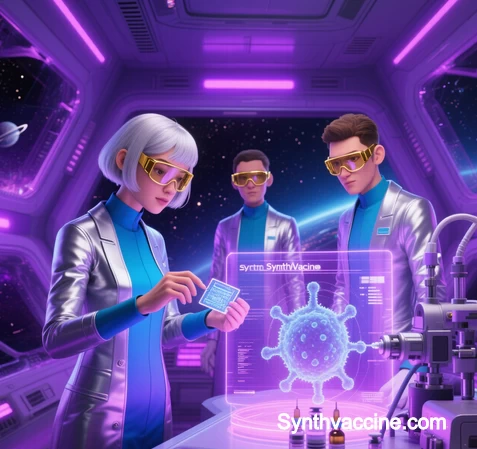 1. Molecular Design Principles for Targeted Immunity
1. Molecular Design Principles for Targeted Immunity
Synthetic vaccines are engineered to trigger precise adaptive immune responses by incorporating immunodominant epitopes within chemically defined structures. Key design elements include:
- B-cell epitopes: Linear or conformational surface motifs (5–20 aa) that bind surface immunoglobulins on B cells, driving antibody production and neutralization .
- T-cell epitopes:
- CD4+ T helper (Th) epitopes (12–25 aa): Bind MHC-II on antigen-presenting cells (APCs), licensing B-cell maturation and memory formation .
- CD8+ cytotoxic T lymphocyte (CTL) epitopes (8–12 aa): Bind MHC-I for direct tumor/pathogen killing .
- Adjuvant integration: Covalent linkage to Toll-like receptor (TLR) agonists (e.g., Pam3Cys for TLR2, CpG-ODN for TLR9) mimics pathogen-associated molecular patterns (PAMPs), activating innate immunity and enhancing APC function .
Suggested Figure 1: Multiepitope Synthetic Vaccine Structure
Core nanoring (blue) displaying B-cell epitopes (gold), Th epitopes (green), and CTL epitopes (purple) conjugated to TLR agonist (red).
2. Mechanisms of Immune Activation
A. Antigen Uptake and Processing
- Dendritic Cell (DC) Priming:
- Vaccines with encapsulated ssRNA (e.g., Qβ-VLPs) activate endosomal TLR7 in DCs, triggering maturation and migration to lymph nodes .
- Peptide-carrier conjugates (e.g., KLH protein) enhance DC phagocytosis via Fc receptors .
- Direct B-cell Activation:
- Nanoscale vaccines (20–100 nm) cross-link B-cell receptors (BCRs), inducing rapid clonal expansion .
- TLR agonists (e.g., Pam3Cys) co-delivered with epitopes amplify B-cell differentiation into antibody-secreting plasma cells .
Suggested Figure 2: Dual-Pathway Immune Activation
- Top: DC phagocytosis → MHC-II presentation → Th-cell activation → B-cell help.
- Bottom: BCR/TLR co-engagement → Plasma cell differentiation → Antibody secretion.
B. T-cell Responses
- MHC-I Cross-Presentation: Nanoparticles release epitopes into the cytosol, enabling proteasome processing and MHC-I loading for CD8+ T-cell priming .
- T-follicular Helper (Tfh) Recruitment: Th epitopes drive IL-21 secretion, promoting germinal center formation and high-affinity antibodies .
3. Innovations to Overcome Immunogenicity Challenges
A. Structural Engineering
- Stabilized Epitopes:
- Cyclization (disulfide bonds/lactam bridges) maintains conformational integrity of viral epitopes (e.g., HIV V3 loop) .
- β-methyl amino acids enhance peptide-MHC binding half-life .
- Self-Assembling Nanoparticles:
- SpyTag/SpyCatcher systems enable plug-and-display multiepitope arrays, mimicking viral surface geometry .
- Ferritin nanocages display repetitive epitopes, amplifying BCR activation .
B. Advanced Adjuvant Systems
| Adjuvant Type | Mechanism | Example |
|---|---|---|
| Molecular TLR agonists | Direct APC activation | Pam3Cys (TLR2), CpG-ODN (TLR9) |
| Cationic Polymers | Enhance endosomal escape/lysosomal rupture | Polyethyleneimine (PEI) |
| Metabolic Modulators | Activate inflammasomes | cGAMP-STING agonists |
Suggested Figure 3: Self-Adjuvanting Vaccine Design
Lipopeptide vaccine with Pam3Cys (lipid, red) linked to Th epitope (green) and CTL epitope (purple).
4. Clinical Evidence and Applications
| Disease | Vaccine Design | Immune Response |
|---|---|---|
| COVID-19 | Spike RBD peptide (aa 437–508) + Alum/CpG | Neutralizing antibodies (Phase II) |
| Melanoma | NY-ESO-1 peptide (aa 157–165) + Pam3Cys | 60% tumor regression (Phase I/II) |
| HIV | Gag conserved epitope (aa 20–30) + TLR9 agonist | CD8+ T-cell activation in macaques |
| Prostate Cancer | Globo-H-KLH conjugate + QS-21 saponin | IgG antibodies against tumor-associated carbohydrate |
5. Future Frontiers
- Personalized Neoantigen Vaccines: Tumor exome sequencing → AI-predicted patient-specific epitopes → rapid peptide synthesis .
- Cold-Chain-Free Formulations: Lyophilized peptide-MOF composites for tropical deployment .
- mRNA-Synthetic Hybrids: Nucleoside-modified mRNA encoding optimized epitopes + LNPs for enhanced cytosolic delivery .
Conclusion
Synthetic vaccines achieve precise immune targeting through:
- Rational Epitope Selection: Computational prediction of conserved B/T-cell motifs.
- Innate Immune Activation: Integrated TLR agonists acting as “built-in adjuvants.”
- Nanoscale Engineering: Repetitive antigen displays for potent BCR activation.
- Dual-Pathway Priming: Coordinated DC and B-cell activation driving robust humoral/cellular immunity.
These strategies enable rapid development of vaccines against evolving pathogens and cancers, with over 30 candidates in clinical trials.
Data Source: Publicly available references.
Contact: chuanchuan810@gmail.com
